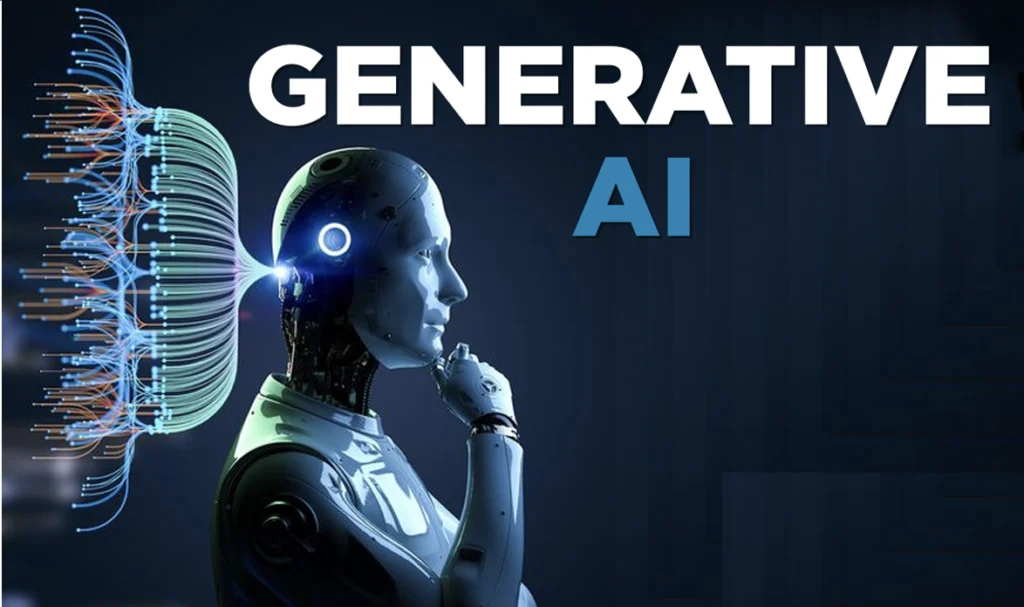Generative AI
Generative AI, a rapidly evolving field of artificial intelligence, is transforming how we create content, from text and images to music and code. The rise of generative AI marks a significant shift in the AI landscape, empowering machines to not just analyze data but also generate novel outputs.
What’s Next for Generative AI in 2025?
Forecasts for AI in the approaching year.
The Generative Artificial Intelligence (AI) surge will persist strongly in the coming years. By 2025, the following key trends in generative AI will be seen.
Forecast 1: Widening Generative AI Use
The utilization of generative AI will escalate across business and consumer sectors in 2025 and beyond. Currently, generative AI capabilities are becoming a crucial distinguishing factor in corporate applications via interactive user interfaces, integrated virtual assistants, natural-language chatbots, task-focused helpers, and other large language model (LLM)-powered productivity enhancements.
TDWI research indicates that the commercialization of generative AI is beginning to gain momentum in corporations. A recent TDWI study on corporate AI preparedness revealed that 30% of organizations have already implemented the technology or have conveyed considerable interest in adopting it in the next year. Similarly, 46% are deliberating how generative AI could be beneficial in their operations.
Forecast 2: More Groundbreaking Experiences
Generative AI will revolutionize the user experience of more devices, programs, and services in 2025. Today, voice chatbots driven by generative AI are becoming a popular selection for self-service functionality in every app, including no-code business analytics platforms.
TDWI research demonstrates that generative AI is rapidly reshaping how businesses function. A recent TDWI study on data and analytics patterns showed that 37% of organizations have already created or are planning to implement generative AI chatbots for customer service purposes, 28% for marketing content creation, 26% for onboarding new hires, and for numerous other applications. Over the next few years, it is anticipated that generative AI will democratize many professions as knowledge workers utilize tools that enable them to independently produce complex outputs that once necessitated highly skilled teams and expensive, lengthy production procedures.
TDWI research also reveals that the generative AI application experience will become increasingly multimodal. In 2025 and beyond, multimodal LLMs will become more prevalent as developers build more generative AI apps that function with text, images, videos, audio, and other data formats. In the recent TDWI study on achieving success with modern analytics, 46% of businesses report either presently using generative AI text prompting to generate images and other formats or intend to do so in the coming years.
Forecast 3: More Advanced Platforms and Tools
Generative AI will be a primary force in the advancement of corporate data infrastructures in 2025.
The need for multimodal applications of generative AI will propel the development of corporate data lakes, data pipelines, data management, and much more. Correspondingly, adoption of generative AI will bring platforms and tools such as vector databases, prompt engineering, and retrieval-augmented generation into the corporate mainstream.
In the approaching year, prompt engineering will continue its swift evolution into a substantial collection of established methods for extracting the desired output from LLMs and other foundation models.
Within generative AI development toolkits, embedding libraries will become a vital component for developers to construct progressively sophisticated similarity searches that encompass a diverse array of data formats. The recent TDWI study on corporate AI preparedness indicates that 28% of organizations already employ or are implementing vector databases to store vector embeddings for utilization with AI models, while 32% plan to embrace those databases in the next few years.
Furthermore, generative AI developers in 2025 will have access to a growing selection of tools for no-code creation of “agentic” applications that provide autonomous LLM-driven copilot, chatbot, and other functionality that can be coordinated over more complex process settings. Agentic workflows, utilizing a new phenomenon known as a “large action model,” will be a growing focal point of intelligent process automation.
Forecast 4: More Varied Models and Data
Developers will have access in 2025 to a growing range of advanced models and data for constructing, training, and optimizing generative AI applications—including both commercial and open-source models.
The recent TDWI study on data and analytics patterns showed that approximately 25% of businesses are experimenting with private or public generative AI models, while 17% are building generative AI apps that use company data with pretrained models. The study also showed that 41% of businesses are investigating how to utilize generative AI to build apps that use private data.
Online cloud marketplaces will become a preferred resource of third-party training data for more corporate AI developers. It is also predicted that businesses will increasingly depend on synthetic data generation as an alternative for training generative AI in scenarios where authentic source data is either excessively expensive, restricted, or unavailable for their needs.


